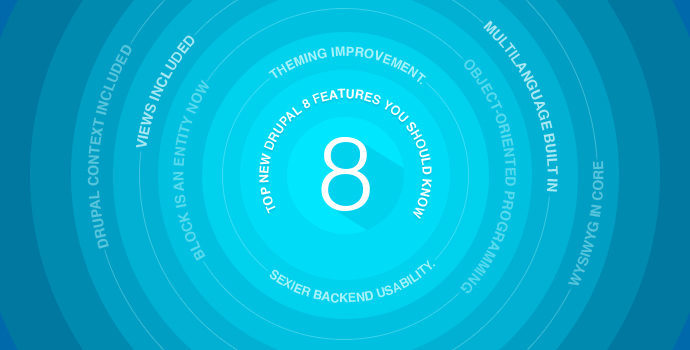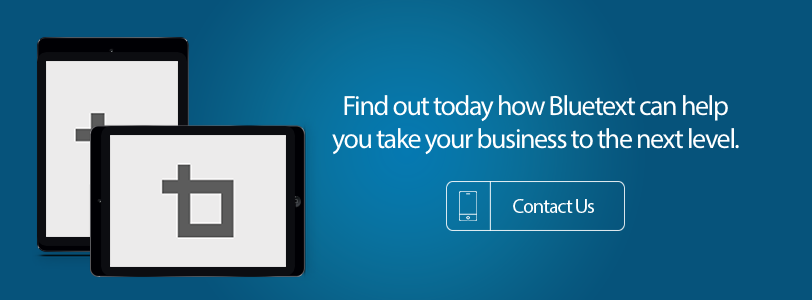Get your mind out of the gutter. I’m talking about persistent navigation. But of course (wink)!
At Bluetext, we are designing and producing websites for the most exciting brands of all sizes across a multitude of industries. We live in the cross section of trends. We see things happening cross markets, and that can be essential when looking at user behaviors and preferences when needing to grab their attention and entice them to engage with a brand. And that means when we see a trend that is becoming more prevalent across platforms, we take notice.
The biggest new user-interface trend we are seeing today is navigation on the left side of the screen. Clients are calling this:
- Unique
- Different
- Fresh
- Smart
For us, this is going full-cycle, back to first-generation sites that were left dominant. But this isn’t your father’s left nav. These left navigation paradigms lock. They personalize. They respond to resolution and device and browser. They have many ways to expand and drill into the subpages structure of the site map with ease.
We see great brands like Qualcomm, VW, and Riverbed, all moving to left navigation systems.
Are you thinking about going left vs top for an upcoming site redesign? Here are five things to consider in making this decision:
- Is desktop a heavy user-base? If yes, then investing in slick navigation can pay off handsomely. If no, then it may not be worth the effort to do an adaptive responsive navigation module.
- Is your sitemap narrow and deep? If you answer yes, then you’re a strong candidate for a left nav.If you answer no and you have a bloated tier one navigation, then best to leave it alone.
- Does your brand logo work in the narrow navigation plate system? Many brand systems don’t contemplate this web application possibility. They also don’t have rules about stacking text about the logo mark. Or they show no name at all, just the logo icon.
- When you look at sites like Riverbed’s, you see the logo move over on scroll down. And when you look sites like ATT’s, you see they are throwing out the word all together. Just like Starbucks is doing everywhere.
- Is your target demographic a savvy web user audience? If you answer no, then consider a small user focus group to ensure they learn and adapt to the new navigation system paradigm with ease. If not, plan on going top navigation.
Here are some more sites that go left nav (or quasi left nav):
Thinking about redesigning your website. Contact Bluetext
Having worked with Drupal 8 in a production setting at one of the top development agencies for the last 15 months, I feel that I can responsibly say that Drupal 8 is ready for prime time. In fact, given all of the great improvements that the platform has to offer, it’s hard to think of an scenario where I would recommend Drupal 7 to a client. These include a standardized Symfony2 framework, a twig templating system, partial page caching, configuration management, layouts, and much more.
To learn more about Drupal 8’s new features, I spent a day recently at DrupalCon Baltimore, an experience that has heightened my excitement about Drupal and the future of the platform. Here are the takeaways that we got from the conference:
- Focus on Lowering the Barriers of Entry
- Core initiatives targeted at improving content authoring
- Revamped Release Cycles
- Drupal maturing in large enterprise
Opening the Flood Gates
The Driesnote was amazing as always. This one was more exciting than usual as there was a strong emphasis on the community and the shift for Drupal to become more user-friendly and lowering the barriers of entry. From a technical standpoint, the standardization on the Symfony2 framework and the addition of the twig templating system make working with Drupal more attractive to PHP developers, opening the platform up to a much wider developer market. From the content side, Dries highlighted the work being lead by Keith Jay to provide a better out-of-the-box experience to all users.
Content is King
In an ever changing market, it is important to stay ahead of the curve and adapt your organization to meet the needs of your client base. We validated a big shift that we are seeing in the market where the decision-maker is no longer the IT team – It has shifted to the marketing team. It is great to see Drupal follow this trend with the strong focus on the new core initiatives around UX, such as layouts and in-place editing. Dries also highlighted Cristina Chumillas for her work in improving the UX of several core pages.

Maintenance made easy
Another exciting announcement was around the revamp of the Drupal release cycles to make core upgrades for both minor and major versions of Drupal easier. The new 6-month cycles have been running great, and I for one am excited to see it. In this new model, functionality will slowly be deprecated (instead of removed) throughout the minor release versions as new functionality is added. This will give module developers an extended period of time to upgrade. Major releases will go one step further and remove the set of deprecated functionality to start the codebase off on a clean slate.
Climbing the Corporate Ladder
Drupal continues to gain traction in the large enterprise space with organizations and marketing teams looking to spend more of their budgets on content and campaigns rather than recurring subscription fees. This can be validated by the uptick in features and functionality that the community is providing for Drupal 8. As the market changes, so should the technology. The greatest thing about Drupal and the community around it is that we are the ones choosing the direction of the platform. We have thousands, or even hundreds of thousands of people validating this platform in the market and pushing the direction of the platform forward.
Bluetext continues to grow its commitment to Drupal and the Drupal community. If you are considering Drupal for your digital platform, please contact us. We would be happy to help you think through your approach to ingesting this powerful platform to power your growing digital ecosystems.
The lunch options surrounding our offices are, shall we say, limited. Perhaps this is one reason the line for Sweetgreen during peak lunch hours can run a solid twenty-minute wait. Diners, myself included, wait until we are ready to eat lunch to get the salad, hence the long line. Now what prevents me, or anyone else for that matter, from running out to get my salad at 11am, when the place is completely empty?
It’s a salad after all. I can stick it in the fridge and eat it whenever I want. One could ask the same question about how we purchase clothes at stores (which old-timers like myself still do). Around this time of year when stores are pushing summer clothes, the sale racks are filled with heavily discounted fall and winter wear – probably the same winter clothes you paid double or triple for just a few months ago. But no matter how enticing the sale, we often bypass the out-of-season sale items in favor of what we will wear in the here and now.
Both of these examples came to mind as I started thinking about how businesses market their products and services to – whether its b2b, b2g or b2c. You not only have to hit prospective new customers you want to convert and existing customers you want to upsell with the right message, but it has to be the right message at the right time. The right time, as is the case with winter clothes on sale as summer begins, often comes down to when prospects and customers are in the frame of mind to be thinking about your product or service. Catch them too early and they will get distracted and move on; catch them too late and, well, that’s self-explanatory I suppose.
This challenge becomes more difficult for marketers trying to blanket a large number of customers and prospects. The ability to personalize the message and the timing is why more marketers are increasingly intrigued by Account-based marketing (ABM). With ABM you concentrate efforts on a very defined set of target accounts within a market, and then utilize campaigns personalized down to the single account level.
Marketing automation leaders are also looking at ABM to round out their services portfolio. Recently inbound marketing and sales leader HubSpot invested in ABM startup Terminus as part of a $10.3 million Series B round. In its blog explaining motivation for the investment, HubSpot talks about the fact that while inbound marketing is valuable for targeting an individual throughout the purchase process and beyond, ABM is useful when there is a need to build a relationship with multiple stakeholders at once. When done right HubSpot notes, ABM is about “precision and personalization not brute force.”
If you are a CMO thinking holistically about marketing to b2b, b2c and b2g customers, Account- based marketing has earned some mindshare. Altera Group research finds that 97% of marketers surveyed said that ABM has a somewhat higher or much higher ROI than other marketing initiatives. And in its 2016 State of ABM study, market research firm SiriusDecisions found 70% of B2B companies are beginning to build ABM programs, while 87% of participants said ABM is extremely or very important to their marketing efforts.
Marketo recently highlighted five key benefits of ABM, and I think they’ve hit the nail on the head:
- Clear ROI – Effective ABM drives clear business results. In fact, compared to other marketing initiatives, the 2014 ITSMA Account-Based Marketing Survey found that “ABM delivers the highest Return on Investment of any B2B marketing strategy or tactic.”
- Reduced Resource Waste – Because ABM is so targeted, it allows marketers to focus their resources efficiently and run marketing programs that are specifically optimized for target accounts.
- It’s Personal and Optimized – ABM entails personalizing your messaging and communications to specific accounts so that your campaigns resonate with these target audiences. Targeted customers are more likely to engage with content that is geared specifically to them, and is relevant to their business and stage in the buyer journey.
- Tracking Goals & Measurement is Clear – When you’re analyzing the effectiveness of campaigns, whether email, ads, web, or events, it’s easier to draw clear conclusions, because you look at a smaller set of target accounts instead of a vast set of metrics.
- Sales Alignment is Easier – ABM is perhaps one of the most efficient ways to align sales and marketing. This is primarily due to the fact that the marketer running an ABM program operates with a mindset very similar to sales—thinking in terms of accounts and how to target them, bring them to the table, and generate revenue from them.
Account-based marketing can help you reach the right prospect and customer with the right message at the right time. It’s 10am, so I’d love to tell you that I’m off to go buy my salad while no one is in line but…
Have a marketing or communications challenge? Contact us. We can help!
Digital marketers are struggling mightily to understand how to reach consumers and prospects across social media. A platform that looks like the dominant king one day may quickly slip behind in new adoption and usage. Today’s trends may appear to be little more than a flash in the pan tomorrow. The challenge for marketers is to understand which platforms to leverage and when to reach new audiences, especially those key younger age groups that actually are the trend setters, even when those audiences have proven to be impressively fickle.
New research of Generation Z shows just how tough it has become to discern long-term trends with social media, and confirms how fleeting its members’ infatuation with previous leading platforms really is. The survey, of more than 300 college and high school students, the core demographic of Generation Z, was conducted earlier this month by the market research firm SCG. The top findings – not too surprising: This age group loves social media, and visits its favorite platform upwards of 11 times each day. What is surprising: That platform isn’t Facebook or Twitter. In fact, these younger millennials are all about Snapchat.
According to the survey 78 percent said they were daily Snapchat users, while slightly fewer–76 percent–reported using Instagram every day. Facebook was down to 66 percent. And while that not might not seem like a huge difference, consider that Facebook is now the granddaddy of social media yet a full third of the next generation of users are not tethered to it. They really like SnapChat’s fun new features, such as the different augmented reality lenses that were such a hit last year and its Geo-fencing tool. And before feeling sorry for Facebook, its dominant position in the market, including not just Facebook but its ownership of Instagram and WhatsApp, means it will be the 800-pound gorilla in the market for years to come.
Looking for an effective approach for your social media strategy?
Give us a call and see how we can help.
Google has done it again, quietly making a significant change to the way its algorithms process Google AdWords that could be significant challenge for digital marketing if not understood and managed. At Bluetext, we closely monitor all of updates to how the Google’s search engines returns query results, and we have posted a number of blogs to let our clients know about these changes and how to address them.
This time, it’s a little different because this change, which Google announced on March 17, addresses AdWords, the tool companies use to implement their keyword purchasing strategies, rather than a revision of its organic search functionality. With this change, marketers may need to adjust their spending programs for purchasing the keywords that drive traffic to their sites.
In the past with AdWords, marketers would select a set of short-tail search terms that would be part of their search advertising mix. For example, a hotel chain might include simple key phrases like “best hotels in Nashville,” mirroring the way customers search for a list of places to stay. Up until the latest change, that exact phrase would drive the Adwords results. But Google has decided that people don’t always type their searches as that exact phrase, dropping the “in” by mistake or even misspelling it as “on.” As a result, Google has decided to expand its close variant matching capabilities to include additional rewording and reordering for exact match keywords.

What does that mean? In layman’s terms, Google will now view what it calls “function words” – that is, prepositions (in, to), conjunctions (for, but), articles (a, the) and similar “connectors” as terms that do not actually impact the “intent” behind the query. Instead, it will ignore these function words in Adwords exact match campaigns so that that the intent of the query will be more important that the precise use of these words.
Sounds like a good move, because if you search for “best hotels in Nashville” or “Nashville best hotels,” the result will be the same in AdWords.
But what if the search is for “flights to Nashville,” which isn’t the same as “flights from Nashville”? Ignoring the function words “to” or “from” would change the purpose of the query. Google says not to worry, its algorithm will recognize the difference and not ignore those words since they do impact the intent.
Hopefully, Google will make good on that promise. But advertisers who have been briefed on this revision aren’t too certain. Their carefully constructed AdWords investments might take a hit if the function words are not managed precisely to meet this new approach.
We like the old adage of “Trust but verify.” While we take Google at its word, we know there are always growing pains with these types of revisions. For our clients, we are recommending that they carefully review the terms they are including in their AdWords mix. Our advice: Be as precise as you can and factor in how these functions words might be perceived before pulling the trigger. Losing traffic to your site because of placement of a simple word should be a real concern.
Want to think more about your adWords, search and SEO strategies. Bluetext can help.
Today’s “need for speed” mantra is evident in everything we do. Your website is no exception. We all want everything to be instantly available at our fingertips – including our online experience. For websites, that means the faster the page speed, the better. Top B2B Marketing Agencies have been working with their clients for the past decade to improve page speed, looking for all sorts of tricks and tips to reduce load time and improve response. Some major players – including Akamai in the hosting space, Google’s AMP and Lightening from Facebook – have developed significant technologies and innovations that are worth considering for your digital game plan.
A survey from Statistic Brain concluded that the average person’s attention span has fallen to 8.25 seconds down from 12 second in 2000. This statistic is projected to continue to decline. As a marketer, that means you have even less time to grab your audience’s attention before they’re on to the next shiny object.
Page speed is defined as the load time of one particular page on your website. Ideally, the site is completely rendered and ready to go on a screen within microseconds of someone typing in its URL and hitting enter. Does this seem like an impossible ask? The short answer is yes. Since a feat such as this is borderline impossible in most cases, we’re forced to resort to more realistic metrics to achieve this lofty goal.
Here are the top three reasons why lightning fast page speed is essential for the success of your organization’s website.
1) It’s all about the User
User experience is the number one priority. Without them, of course, your site is just a jumble of html that serves no purpose. Site optimization is key and should be performed often.
- Fast page load time means users will be able to quickly navigate the site, increasing pages per session, time on page, and (possibly) decreased bounce rate.
- Better numbers for the metrics listed above mean better rankings from Google.
- Referrals become more likely when a user has had a good experience on your site.
In today’s ultra-competitive marketplace, a positive user experience could easily be the edge between your site and someone else’s.
2) The Fast and the Mobile Friendly
Google expects a mobile page to render above the fold in one second or less. Since more than half of the 3.4 billion daily Google searches are done on mobile devices, it’s imperative to have a fast and mobile-friendly site. According to an experiment done by Moz, Google has indicated it may actually be measuring “time to first byte” (TTFB) — which is how long it takes the first byte of information to get from a server to a browser.
Now that you know what Google’s looking for, there are numerous tools to help pinpoint where improvements could be made on a site’s backend. At Bluetext, we like to take out any guesswork and get our insights straight from Google. Put any URL into Google’s PageSpeed Insights tool and it provides recommended fixes, as well as a speed score on both mobile and desktop.
3) Page Speed + Stellar CTA = Increased # of Conversions
It’s been proven that page speed has a direct correlation to the number of conversions as long as it’s paired with an enticing Call to Action (CTA). For example, if a user wants to download a white paper but has to wait for the page to load, that user will lose interest and most likely leave the site. For businesses, that means a prospect is bouncing and may be lost for good.
Every second counts. Don’t wait, start optimizing your site speed today because if you’re not recognizing the need for speed, you might as well go home. For more tips on making a great first impression? Click here: https://bluetext.com/top-branding-agencies-know-never-get-second-chance-make-first-impression/
Need help speeding up your digital platform to get the performance you want ? Contact us
Last week I was fortunate enough to be invited by BizBash to speak at their DC event entitled “ELEVATE”.
Elevate is a one-day conference where event and meeting professionals are able to rethink and explore the new attendee journey at events. Featuring in-depth workshops on event marketing, technology, design, sponsorships, and other topics, they discovered innovative ideas and compelling insights from the most influential names in events.
As BizBash.com describes it, “Social media has become a key component in all aspects of business, especially live experiences. Understanding new, emerging platforms and how social media and event marketing strategies merge is an integral part of the event marketing process. In this session, Jason Siegel, founding partner of Bluetext, will discuss how to develop a three-part campaign style approach to social media to maximize event reach. Siegel will share new ways to create urgency to register, how to leverage website personalization, insights on interpreting engagement, and how to seamlessly integrate virtual reality to drive interest and registrations for events.”.
The energy and buzz in the Reagan Center was very strong, and it was great to get out and meet a lot of top marketers in the field of event marketing, virtual reality, and all kinds of experiential elements. Please enjoy the presentation I gave below.
To answer the title of this blog post let’s first start by reviewing the difference between a Digital Marketing Company and a Marketing Company. How much can really be different in today’s digital driven economy? A lot. Many traditional marketing companies claim to offer a full suite of digital services, when, in fact, they do not.
This isn’t a big secret. Traditional marketing companies’ pitches can seem like smoke and mirrors, hiding the fact that they are not capable of providing true digital marketing services such as search engine optimization (SEO), social marketing, and robust user experience design, website redesign and development– and let’s not forget the ever more critical content and UX strategy now necessary for any brand to truly succeed online.

Marketing Companies often maximize their technical capabilities with a help desk junior associate, while digital marketing companies have a chief technology officer and talent that surrounds him to offer top notch digital services to its clients. Marketing companies often feel because their latest version of Photoshop enables them to make a website design comp they are of course now a top website design agency. Not really true as web design in today’s responsive design world requires services such as journey mapping, taxonomy development, and persona research that informs a sophisticated website presentation to its users that really delivers.
While both top digital marketing companies and top marketing companies offer a sophisticated integrated way to drive targeted traffic to its users, the reality is that the digital firm will offer up ideas that use the latest and greatest digital trends because they have talent focused on emerging platforms and how to integrate them together. From virtual reality to data visualizations, this kind of lingo is second nature at a digital marketing company, but at a traditional top marketing company the answer is either the firm is feeling awkward and not confident offering this solution, or the talent helping is a 3rd party consultant that isn’t truly integrated into the agency’s DNA.
So now that I have helped clarify the difference between a Top Digital Marketing Company and a Top Marketing Company, let’s look at that other word – Company vs Agency.
An agency’s job is to plan a campaign using digital and traditional methods such as PR, broadcast media, online advertising, or direct marketing. They utilize the talents of their art directors, graphic designers, and copywriters. They create campaigns that shine the spotlight on your product or service for a finite length of time.
If you have a global strategy, a well-defined brand, a keen idea of exactly who your customer is, and a designated advertising & creative budget, then you might want to utilize the services of a top agency.
Be doubly sure that you know the characteristics, the lifestyle, and current buying preferences of your customers. You don’t want to waste time and money marketing to the wrong person. Knowing your target audience and your ideal buyer is the job of marketing. Also, knowing how to attract customers versus playing tag with them is the job of marketing.
So in summary – agencies focus on campaigns to solve a client’s very specific pain point. Usually defined by the client. Agencies are usually laser focused, agile, and deliver with passion.

Mosaic illustration for the advertising campaign of Clear Channel in Switzerland
Ok, so then what’s is different about a company vs an “agency.”
You may need help in honestly assessing the needs of your business. If that is the case, here are some good questions to start out with:
1) Are you attracting enough leads?
2) Are you able to accurately track results of your advertising and marketing strategy?
3) Are you converting leads to sales?
4) Are you nurturing and maintaining relationships with your customer base?
These are the types of issues that a company can help you with. The agency prides itself, rightfully so, on taking a high level approach with a laser focus on execution. However, the top marketing company takes a more consultative approach. The result is a marketing strategy that is consistent with your company history, values, and short and long term goals. Finally, the biggest result is getting results that match your expectations.


